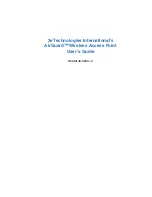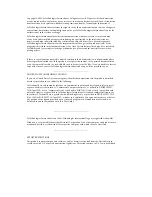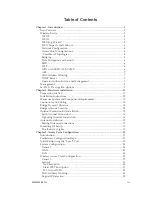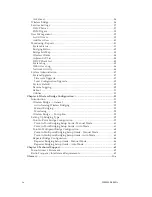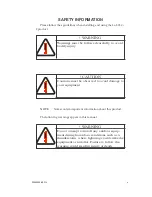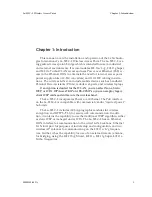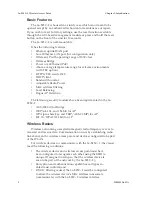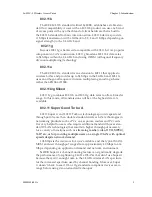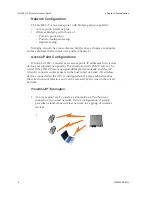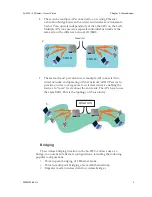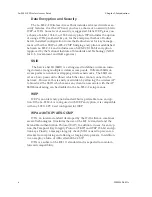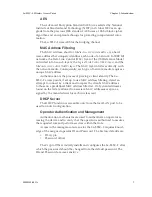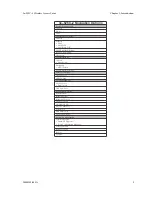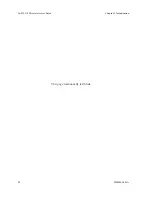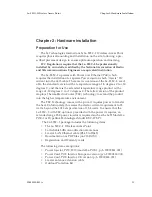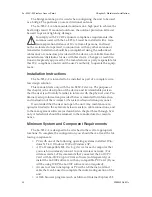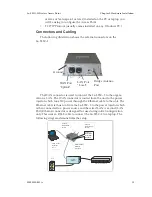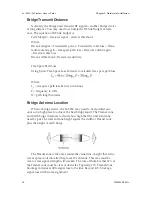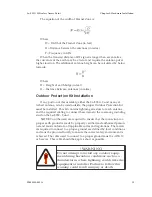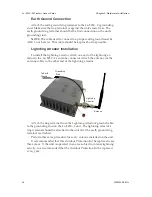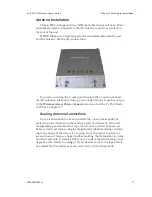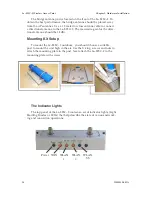
3e–525C–2 Wireless Access Point
Chapter 1: Introduction
2
29000155-001 A
3e–525C–2 Wireless Access Point
Chapter 1: Introduction
29000155-001 A
3
802.11b
The IEEE 802.11b standard ratified by IEEE, establishes a stable stan-
dard for compatibility. A user with an 802.11b product can use any brand
of access point with any other brand of client hardware that is built to
the 802.11b standard for basic interconnection. 802.11b devices provide
11 Mbps transmission (with a fallback to 5.5, 2 and 1 Mbps depending on
signal strength) in the 2.4 GHz band.
802.11g
Because 802.11g is backwards-compatible with 802.11b, it is a popular
component in LAN construction. 802.11g broadens 802.11b’s data rates
to 54 Mbps within the 2.4 GHz band using OFDM (orthogonal frequency
division multiplexing) technology.
802.11a
The IEEE 802.11a standard is an extension to 802.11 that applies to
wireless LANs and provides up to 54 Mbps in the 5GHz band. 802.11a
uses an orthogonal frequency division multiplexing encoding scheme
rather than FHSS or DSSS.
802.11b/g Mixed
802.11b/g combines 802.11b and 802.11g data rates to offer a broader
range. In this mode, all transmissions will be at the highest data rate
available.
802.11 Super G and Turbo A
802.11 Super G and 802.11 Turbo A technologies provide speed and
throughput of more than double standard wireless LAN technologies in
networking products such as PCs, access points, routers and PC cards.
It is very helpful to users who require additional bandwidth (over stan-
dard WLAN technologies) that results in higher throughput necessary
for a variety of functions such as:
streaming media (video, DVD, MPEG),
VoIP, etc., or for providing multiple users on a single WLAN with optimal
speeds despite network demand.
108 Mbps is the
maximum link speed
available and the
typical MAXI-
MUM end-user throughput ranges from approximately 40 Mbps to 60+
Mbps, depending on application demand and network environment.
NOTE
: Super G’s channel bonding feature can significantly degrade
the performance of neighboring 2.4GHz WLANs that don’t use Super G,
because there isn’t enough room in the 2.4GHz wireless LAN spectrum
for the increased spectrum used by channel bonding. Moreover, Super
G doesn’t check to see if 11b or 11g standards-compliant devices are in
range before using its non-standard techniques.
Содержание AirGuard 3e-525C-2
Страница 2: ...This page intentionally left blank ...
Страница 3: ...3e Technologies International s AirGuard Wireless Access Point User s Guide Model 3e 525C 2 ...
Страница 8: ...vi 29000155 0001 A This page intentionally left blank ...
Страница 18: ...3e 525C 2 Wireless Access Point Chapter 1 Introduction 10 29000155 001 A This page intentionally left blank ...
Страница 76: ...3e 525C 2 Wireless Access Point Chapter 4 Wireless Bridge Configuration 68 29000155 001 A ...



